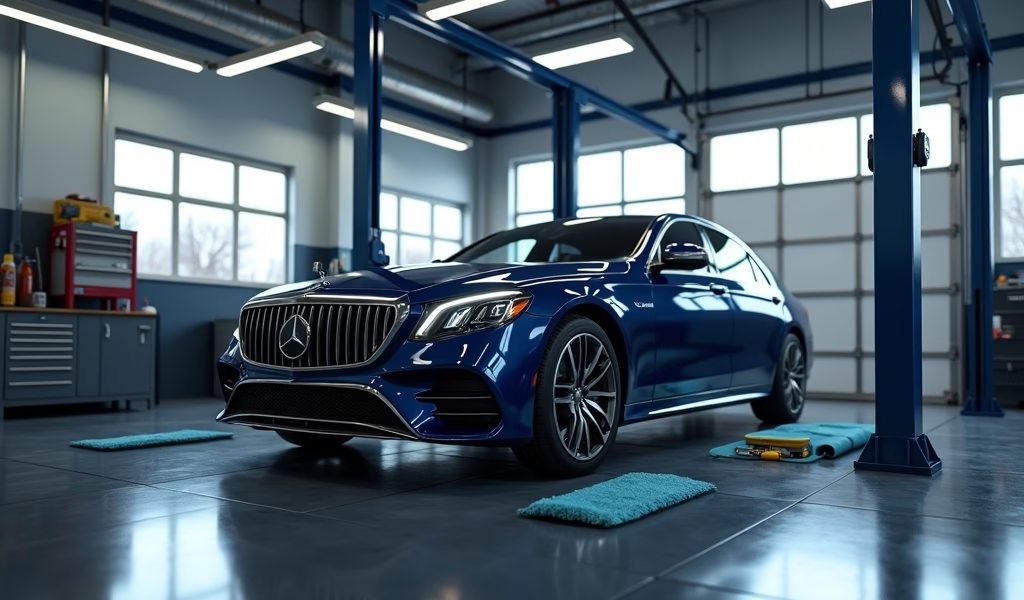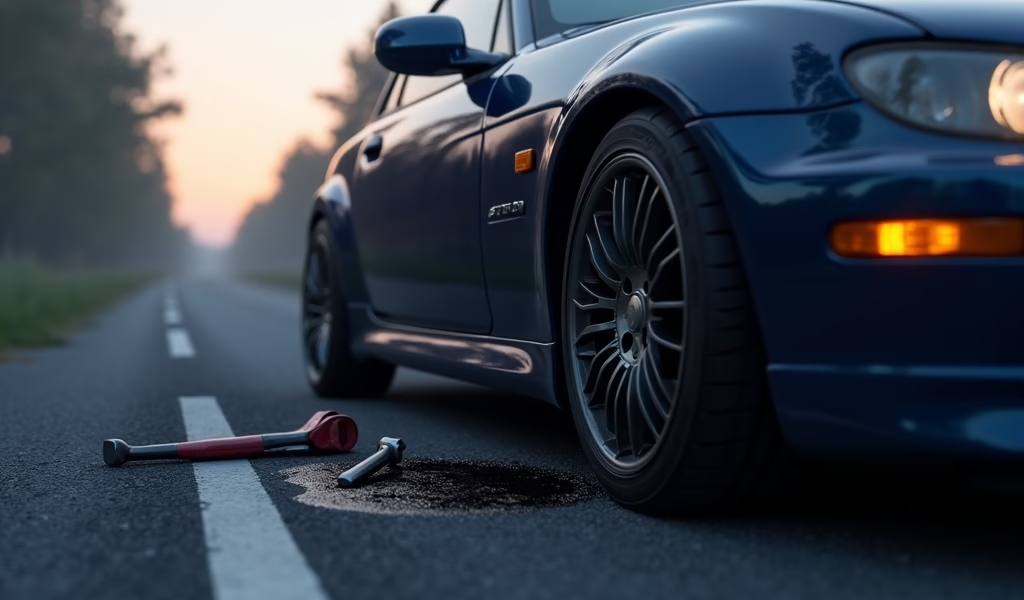Overview
This article outlines five essential maintenance practices for new vehicle owners: following manufacturer maintenance schedules, regularly checking and replacing fluids, properly caring for tires, maintaining the battery, and protecting both exterior paint and interior materials. The author, a professional mechanic with 15 years of experience, emphasizes that consistent and proactive care during a vehicle’s first few years dramatically affects its longevity, performance, and resale value.
Table of Contents
- Introduction: Preserving Your Investment in a New Vehicle
- Tip 1: Regular Maintenance Schedules Are Non-Negotiable
- Tip 2: Routine Fluid Checks and Replacements
- Tip 3: Proper Tire Care and Rotation
- Tip 4: Battery Maintenance and Protection
- Tip 5: Paint and Interior Protection Strategies
- Conclusion: Maximizing Your Vehicle’s Lifespan
- Frequently Asked Questions
Introduction: Preserving Your Investment in a New Vehicle
When you’re exploring new vehicles for sale, the excitement of that new car smell and pristine condition is undeniable. As a professional mechanic with over 15 years in the industry, I can tell you that how you care for your vehicle in the first few years dramatically affects its longevity. Modern vehicles are engineering marvels, but they still require attentive maintenance to perform at their best for years to come.
The market for new vehicles is constantly evolving, with manufacturers introducing advanced technologies and materials that need specific care approaches. Taking proper care of your new vehicle isn’t just about preserving its value—it’s about ensuring reliability, safety, and performance throughout your ownership. Many first-time buyers underestimate how much proper care can extend the life of their investment.
Before diving into specific maintenance tips, I recommend familiarizing yourself with your new car buying options and features to understand which care strategies are most important for your specific model. Today’s vehicles vary significantly in their maintenance needs based on engine type, drivetrain, and onboard technology.
Ready to protect your investment? Let’s explore the five essential care tips that every owner of a new vehicle should implement right away.
Tip 1: Regular Maintenance Schedules Are Non-Negotiable
The single most important aspect of new vehicle care is adhering to the manufacturer’s recommended maintenance schedule. These aren’t arbitrary suggestions—they’re carefully calculated intervals designed to keep your vehicle operating at peak performance. Modern engines, transmissions, and electronic systems have specific maintenance requirements that, when followed, can prevent costly repairs down the road.
Your owner’s manual contains a detailed maintenance schedule tailored specifically to your vehicle model. This document is essentially your car’s bible—follow it religiously. Most new vehicles today come with maintenance reminders built into their digital displays, making it easier than ever to stay on top of service intervals.
For the first year of ownership, pay special attention to the break-in period recommendations. This critical time helps components seat properly and establishes patterns that will affect performance for years to come. Many studies by Consumer Reports have shown that vehicles that receive consistent scheduled maintenance can last 200,000 miles or more—a significant improvement over neglected vehicles.
Don’t fall for the myth that new vehicles don’t need much maintenance in the first few years. Modern engines may have longer intervals between oil changes, but skipping them altogether is a recipe for disaster. Some critical services during the first 30,000 miles include:
- Initial oil change (often earlier than subsequent changes)
- Tire rotation and alignment check
- Brake inspection and fluid check
- Air filter inspection
- Software updates for onboard systems
Ready to protect your investment? Schedule your vehicle’s first maintenance appointment today, even if it feels premature. Your future self will thank you for this proactive approach.

Tip 2: Routine Fluid Checks and Replacements
Your vehicle relies on a complex system of fluids to operate smoothly, each with its own maintenance requirements. Even brand new vehicles need regular fluid checks to ensure everything is at optimal levels. Think of these fluids as the lifeblood of your vehicle—when they’re clean and at proper levels, everything works harmoniously.
Engine oil is the most obvious fluid to monitor, but it’s far from the only one. Modern vehicles utilize sophisticated transmission fluids, brake fluids, power steering fluid, coolant, and even specialized fluids for hybrid system cooling. Each serves a critical purpose, and letting any one of them degrade or deplete can cause cascading problems throughout related systems.
Here’s a practical breakdown of fluid maintenance for new vehicles:
- Engine Oil: Check monthly, change according to manufacturer specifications (typically 5,000-10,000 miles for modern vehicles)
- Coolant: Check levels monthly, but avoid opening the reservoir when the engine is hot
- Transmission Fluid: Check quarterly for automatic transmissions, following the dipstick procedure precisely
- Brake Fluid: Inspect during oil changes, looking for proper level and clarity
- Power Steering Fluid: Check quarterly, especially if you notice steering changes
- Windshield Washer Fluid: Top off monthly to ensure visibility during unexpected weather
The quality of replacement fluids matters significantly. Always use the exact type specified in your owner’s manual. For instance, many new vehicles require full synthetic oil with specific viscosity ratings, and using conventional oil instead could void your warranty and cause premature wear.
I’ve seen countless engines damaged by owners who thought fluid changes could wait “a little longer.” The reality is that today’s precision engines operate within much tighter tolerances than older models, making proper fluid maintenance even more critical. Among the newest car brands on the market, many have developed their own proprietary fluids designed specifically for their engines.
Remember that extreme weather conditions—whether severe heat or cold—put additional stress on your vehicle’s fluids. If you live in an area with temperature extremes, consider more frequent checks during seasonal transitions.
Tip 3: Proper Tire Care and Rotation
Tires are your only connection to the road, yet they’re often the most neglected component on new vehicles. Proper tire maintenance not only extends tire life but also improves fuel efficiency, handling, and safety. The sophisticated traction control and stability systems on modern vehicles can only work properly when tires are in good condition.
Tire rotation is critical for even wear patterns. Most new vehicles have different weight distributions between front and rear, causing uneven tire wear if not rotated regularly. Follow your manufacturer’s recommendation, but typically, rotation should occur every 5,000-7,000 miles.
Tire pressure fluctuates with temperature changes and naturally decreases over time. For every 10°F change in ambient temperature, tire pressure changes by about 1 PSI. Most new vehicles have tire pressure monitoring systems (TPMS), but these typically only alert you when pressure is dangerously low—not when it’s merely suboptimal.
I recommend checking tire pressure at least monthly with a quality gauge, adjusting to the specifications listed on the driver’s door jamb (not the maximum pressure on the tire itself). Proper inflation can improve fuel economy by up to 3% and extend tire life by thousands of miles.
Alignment is another crucial aspect of tire care that many new vehicle owners overlook. Signs that your vehicle needs alignment include:
- Uneven tire wear patterns
- Vehicle pulling to one side
- Steering wheel off-center when driving straight
- Vibration in the steering wheel
Even brand new vehicles can benefit from an alignment check after the first few thousand miles, as components settle and adjust during the break-in period. According to NHTSA data, proper tire maintenance is directly linked to accident prevention and improved vehicle control during emergency maneuvers.
Don’t forget to inspect your tires visually for damage, foreign objects, and tread wear. The penny test (inserting a penny with Lincoln’s head upside down into the tread) is a simple way to check tread depth—if you can see the top of Lincoln’s head, it’s time for new tires, even if they’re relatively new.
Tip 4: Battery Maintenance and Protection
Modern vehicles place unprecedented demands on their batteries, powering everything from advanced infotainment systems to driver assistance features, even when the engine isn’t running. While new vehicle batteries are designed to handle these loads, they still require attention to ensure maximum lifespan and reliability.
Most new vehicles come equipped with absorbed glass mat (AGM) or enhanced flooded batteries rather than traditional lead-acid designs. These advanced batteries support the start-stop systems and regenerative braking features common in modern vehicles. Though they’re more resilient, they’re also more expensive to replace when they fail.
To maximize battery life in your new vehicle:
- Keep connections clean and tight—corrosion at terminals can prevent proper charging
- Avoid frequent short trips where the battery doesn’t have time to fully recharge
- Consider a maintenance charger/tender for vehicles that sit unused for extended periods
- Be mindful of parasitic drains from aftermarket accessories
- Have the charging system checked annually during routine maintenance
Climate plays a significant role in battery health. Extreme heat accelerates internal degradation, while cold temperatures reduce battery efficiency temporarily. If you live in a region with temperature extremes, be especially vigilant about battery maintenance. Many new city cars for sale have special battery management systems designed to cope with frequent stops and starts.
Warning signs of battery issues include slow engine cranking, dimming lights, electrical glitches, or the battery warning light illuminating on your dashboard. Don’t wait for complete failure—have your battery tested at the first sign of trouble. Most auto parts stores offer free battery testing services.
Even if your vehicle has roadside assistance coverage, a battery failure is an inconvenience at best and potentially dangerous in remote locations or extreme weather. Proactive battery maintenance is cheap insurance against being stranded.
Take action today: Add a battery check to your seasonal maintenance routine, especially before winter when battery failures are most common and most dangerous.

Tip 5: Paint and Interior Protection Strategies
The finish on your new vehicle is more than just about looks—it’s the first line of defense against corrosion and environmental damage. Modern automotive paints are remarkably durable, but they still require protection to maintain their showroom shine and structural integrity. Likewise, interior materials face constant challenges from UV exposure, spills, and daily use.
Exterior protection should begin immediately after purchase. Consider these proven strategies:
- Ceramic coating application: A professional ceramic coating provides years of protection against environmental contaminants, UV damage, and minor scratches
- Paint protection film: Transparent urethane film can be applied to high-impact areas like the hood, mirrors, and door edges
- Regular washing: Bi-weekly washing removes contaminants before they can bond to or etch the paint
- Quarterly waxing: Even with advanced coatings, periodic waxing adds another layer of protection
- Bird dropping removal: Remove bird droppings immediately as they can etch through clear coat in hours on hot days
Interior protection is equally important, especially with the premium materials found in many new vehicles. Leather, in particular, requires regular conditioning to prevent cracking and maintain suppleness. Fabric upholstery benefits from protective treatments that repel stains and simplify cleanup.
UV protection is crucial for both exterior and interior. Park in the shade when possible or use a windshield sun shade. Consider window tinting (where legally permissible) to reduce heat and UV exposure to interior surfaces. According to insurance industry research, well-maintained vehicles retain significantly higher resale value—up to 15-20% more than neglected ones.
For those living in areas with harsh winters, undercarriage protection is non-negotiable. Road salt and brine solutions used for de-icing are extremely corrosive. Regular undercarriage washes during winter months can prevent premature rust formation, even on new vehicles.
Don’t overlook small details like door jambs, drainage channels, and weatherstripping. These areas can trap moisture and contaminants, leading to premature deterioration. Include them in your cleaning routine to prevent issues from developing.
Don’t wait until damage occurs—implement a protection strategy for your vehicle this week. A small investment in quality products and services now will preserve your vehicle’s value for years to come.
Conclusion: Maximizing Your Vehicle’s Lifespan
When you’re exploring new vehicles for sale, remember that your care practices in the first few years set the foundation for the entire ownership experience. The five tips we’ve covered—following maintenance schedules, checking fluids, caring for tires, maintaining the battery, and protecting finishes—form a comprehensive approach to vehicle care that pays dividends in reliability, safety, and resale value.
Modern vehicles are designed to last longer than ever before, with many capable of exceeding 200,000 miles when properly maintained. The key is consistency and proactive care rather than reactive repairs. By addressing small issues before they become major problems, you’ll enjoy lower overall ownership costs and fewer unexpected breakdowns.
Keep your owner’s manual handy and follow its guidance for your specific model. Remember that manufacturer recommendations are minimum requirements—vehicles operated in extreme conditions often benefit from more frequent service. Develop a relationship with a qualified service facility that specializes in your vehicle’s make, as their expertise can catch potential issues before they develop.
Finally, maintain detailed service records to document your diligent care. These records not only help you stay on track with maintenance but also provide valuable documentation when selling or trading in your vehicle. In today’s digital age, numerous apps can help you track maintenance history and receive timely reminders.
Your new vehicle is one of your most significant investments. With thoughtful care and regular maintenance, it will reward you with years of reliable transportation and better retain its value when it’s time to upgrade. The small efforts you make now will pay off significantly in the long run.
Frequently Asked Questions
How often should I change the oil in my new vehicle?
Follow your manufacturer’s recommendations, typically between 5,000-10,000 miles for modern vehicles. Many new cars have oil life monitoring systems that will alert you when a change is needed.
Do new vehicles still need a “break-in” period?
Yes, most manufacturers recommend a break-in period of 500-1,000 miles. During this time, avoid hard acceleration, heavy loads, and extended high-speed driving.
Can I use any type of oil in my new vehicle?
No, you must use the exact viscosity and specification recommended in your owner’s manual. Many new engines require synthetic oils with specific certifications.
How long should a new car battery last?
Most new vehicle batteries should last 3-5 years under normal conditions. Climate extremes, short trips, and accessory usage can significantly reduce battery life.
Are dealer services required to maintain my warranty?
No, the Magnuson-Moss Warranty Act protects your right to have maintenance performed by any qualified shop. Just keep detailed records and receipts of all services performed.


Pingback: New 2023 Cars for Sale: 7 Pro Care Hacks - knowsyourcar.com